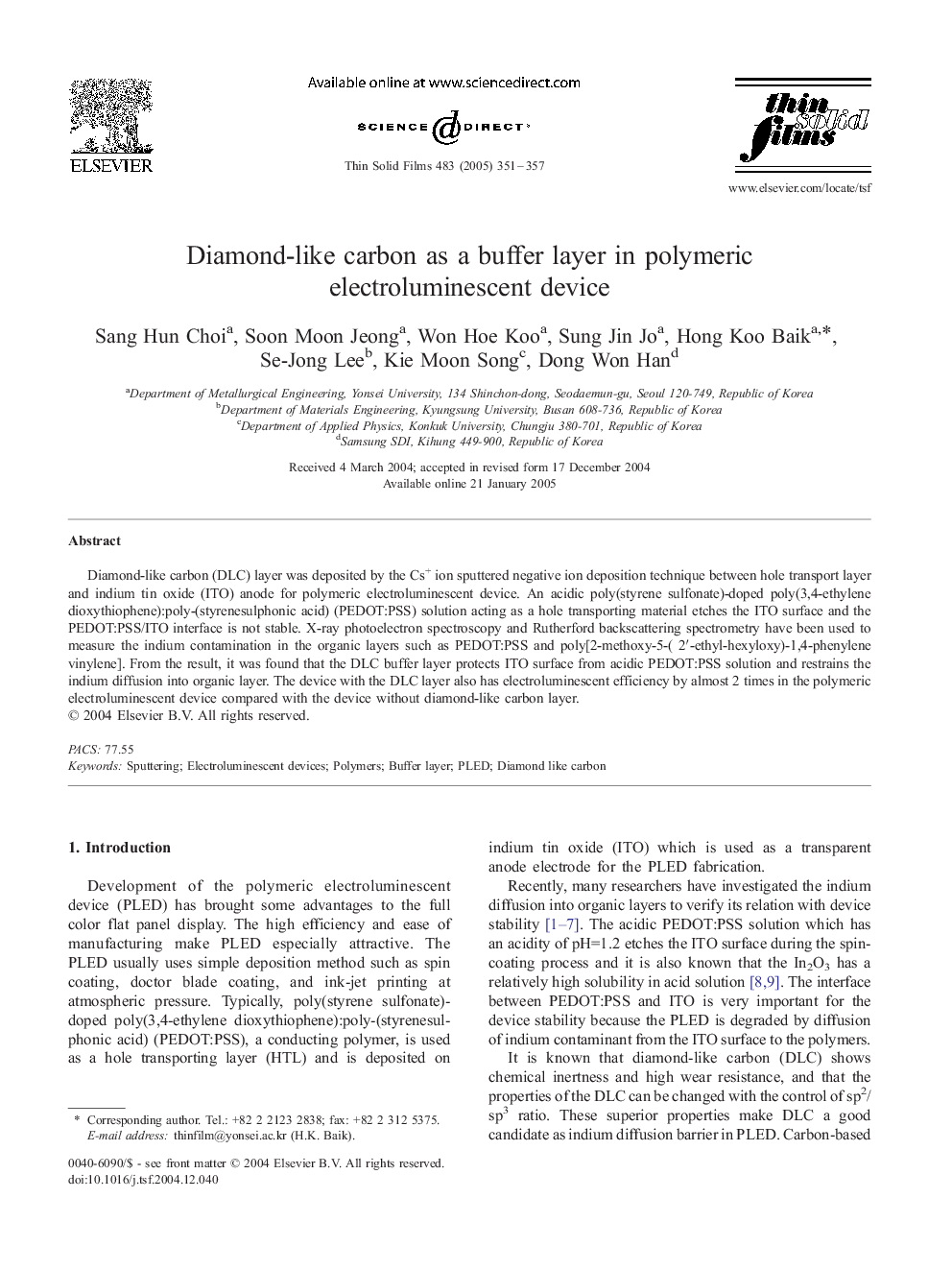| Article ID | Journal | Published Year | Pages | File Type |
|---|---|---|---|---|
| 9812644 | Thin Solid Films | 2005 | 7 Pages |
Abstract
Diamond-like carbon (DLC) layer was deposited by the Cs+ ion sputtered negative ion deposition technique between hole transport layer and indium tin oxide (ITO) anode for polymeric electroluminescent device. An acidic poly(styrene sulfonate)-doped poly(3,4-ethylene dioxythiophene):poly-(styrenesulphonic acid) (PEDOT:PSS) solution acting as a hole transporting material etches the ITO surface and the PEDOT:PSS/ITO interface is not stable. X-ray photoelectron spectroscopy and Rutherford backscattering spectrometry have been used to measure the indium contamination in the organic layers such as PEDOT:PSS and poly[2-methoxy-5-(Â 2â²-ethyl-hexyloxy)-1,4-phenylene vinylene]. From the result, it was found that the DLC buffer layer protects ITO surface from acidic PEDOT:PSS solution and restrains the indium diffusion into organic layer. The device with the DLC layer also has electroluminescent efficiency by almost 2 times in the polymeric electroluminescent device compared with the device without diamond-like carbon layer.
Related Topics
Physical Sciences and Engineering
Materials Science
Nanotechnology
Authors
Sang Hun Choi, Soon Moon Jeong, Won Hoe Koo, Sung Jin Jo, Hong Koo Baik, Se-Jong Lee, Kie Moon Song, Dong Won Han,
